Humanity
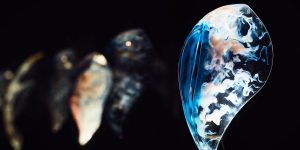
Hybrid Living Materials
The Mediated Matter Group (INT)
Hybrid Living Materials (HLMs) weisen auf eine aufregende Zukunft für DesignerInnen an der Schnittstelle von Biologie und Technologie hin, wenn es darum geht, Produkte zu entwickeln, die auf eine bestimmte Form sowie auf ein bestimmtes Material, eine bestimmte chemische und sogar genetische Zusammensetzung zugeschnitten sind.
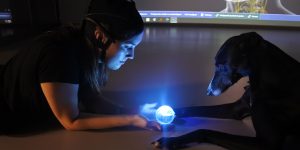
Sneak Peak into DDTlab (360° video view)
RUK – DDTlab (SI), AFormX (SI), Arctur (SI), Yaskawa (SI), STPŠ (SI)
In DDTlab we developed several projects where we linked the human brain and output devices. The NeuroFly project involves flying an airplane using only brain waves, while NeuroRobo will have you manipulating the movements of robots with thoughts.

Vertigo Bird 2020 - Climb onto the highest chimney in Europe (360° view)
Climb onto the highest point of our past to see the future. The 360-metre structure is part of the Trbovlje Power Station.

el violador eres tú
LASTESIS collective
el violador eres tú is a small-format staging that, using the collage technique, links performance, sound and visual experimentation, with the aim of generating a graphic, visual and scenic assessment of theoretical essays that address gender issues from a feminist perspective. el violador eres tú is based on The Elementary Structures of Violence by Rita Segato (2003).

Digital Drag
Jeremy Bailey (US)
Face filters are widely used. In the last months we have been online in front of the camera more than ever. The question is what face-filter to wear. Choose fabulous looks using the latest tools tips and tricks to augment reality Transgress and queer your identity, become a digital drag unicorn or whatever Nxt you can imagine. Famous New Media Artist Jeremy Bailey will fly you through step by step to create and perfect your own AR look, so you can stand out from the crowd at your upcoming zoom party or corporate webinar. Let’s all become famous new media artists!
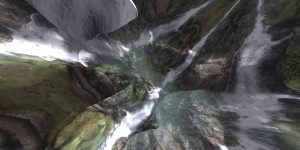
Habitat
Heleen Blanken (NL)
The environmental crisis and the destruction of habitats forces us to imagine a future in which nature can be remembered in digital form. Natural history museums seek to preserve nature physically by fixing it in time and space. How might the archiving of nature evolve in a digital context? Could it bring us even closer to nature? Habitat is a data-driven installation that uses 3D scans of organic artefacts such as stones, corals and fossils from Leiden’s Naturalis Biodiversity Center and transforms them into a game-like, meditative environment. You are invited to reconnect with the wonder of nature as you navigate through a series of ever-evolving digital worlds, each accompanied by its own soundscape. Original installation is on display at Nxt Museum.
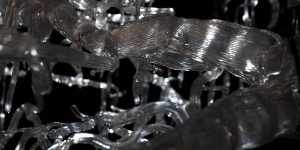
Econtinuum
Kathy Steppe (BE), Thijs Biersteker (NL). Moderation: Bogomir Doringer (RS/NL)
We do not acknowledge that collaboration with plants is paramount to our existence. Econtinuum is a new installation by ecological artist Thijs Biersteker, in partnership with different scientists and commissioned by Nxt Museum. It visualises the latest pioneering research into plant-to-plant communication. In discussion with the artist and bio-engineer in environmental technology, we will uncover how trees work together, how to learn from each other, warn each other and share nutrients, but also how we can learn from it to improve our own communication and relationships. We can again connect with nature by using the latest technology.
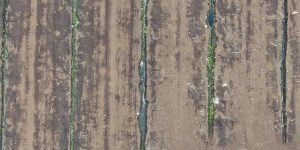
Future Focus – Fragile Worlds I
Invisible Flock, Kasia Molga, Dr. Joanne Tippett, Irini Papadimitriou
This session takes viewers on a virtual studio tour and conversation with artists sharing work, and engaging with and responding to environmental change, and an exploration of how stories of a changing landscape are communicated through nature and other species.

Role of Media Art
Etsuko Ichihara (JP), Nao Tokui (JP), Natsumi Wada (JP), Shiho Fukuhara (JP), Asako Tomura (JP), Minoru Hatanaka (JP)
Japan Media Arts Festival, which was founded in Japan, focuses on the field of art, entertainment, manga and anime, and is becoming more and more centripetal in its inclusion of various fields. What is the role of media arts in this context? This session the panelist will be discussing the future of media art along with the unique setting of this year’s Ars Electronica to be held online.

Reminiscence of the Unknown, Image and Matter || Digitally Natural, Naturally Digital || Sehnsucht nach Masse
Yoichi Ochiai (JP)
This work is a documentation of Ochiai’s the exhibition filled with his confrontation with nature and his deep spirit of inquiry makes us reflect on the time when the relationship between nature and the human being must be reconstructed, so-called Anthropocene, and the many lives that we are forced to recognize through the Covid-19.
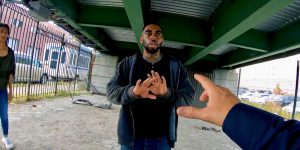
Perception iO
Karen Palmer (GB)
Perception iO (Input Output) ist die Zukunft der Strafverfolgung. Ein KI-Datensatz, der emotional auf Teilnehmende und möglicherweise auf deren Voreingenommenheit reagiert.
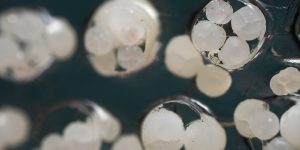
Observing the Microscopic Gardens
Saša Spačal (SI), Toby Kiers (NL/US), Esmee Geerken (NL), De Onkruidenier (NL), Spela Petric (SI), Nicola Triscott (UK)
The nocturnal roundtable “Observing the Microscopic Gardens” features three events: 1. Artist Saša Spačal and microbiologist professor Toby Kiers discuss microbial trade agreements 2. Artist/chemist Esmee Geerken and De Onkruideniers present their microscopic garden houses 3. Artist Spela Petric and curator Nicola Triscott discuss what opinions plants and animals might have about human activity on their/our planet.
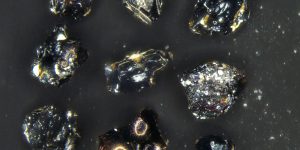
Observing the Macroscopic Gardens
Christiaan Zwanikken (NL), Raoul Frese (NL), Angelo Vermeulen (BE), Remco Daalder (NL)
The nocturnal roundtable “Observing the Macroscopic Gardens” features two talks: 1. Artist Christaan Zwanikken will talk about city-dwelling plant robots with astrophysicist Raoul Frese 2. Artist-biologist Angelo Vermeulen will talk about socializing Mars-gardens with Remco Daalder, municipal ecologist of Amsterdam

Air on Air
Yasuaki Kakehi (JP), Daisuke Akatsuka (JP), Juri Fujii (JP), Yoshimori Yoshikawa(JP), Joung Min Han (KR)
Diese Arbeit ist eine partizipatorische physische Installation. Am Ort der Installation erzeugt, basierend auf den Atemdaten der TeilnehmerInnen, eine Seifenblasenmaschine Seifenblasen. Über einen Webbrowser können sie die in der Luft schwebenden Luftblasen sehen, als ob sie diese selber am Veranstaltungsort anblasen würden. Diese Installation ermöglicht es den TeilnehmerInnen, die Luft an einem entfernten Ort zu spüren. Und sie bietet ihnen auch die Möglichkeit, in diesen Zeiten eingeschränkter Mobilität "physisch" mit dem entfernten Ort zu kommunizieren.
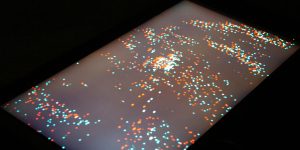
Kōrero Paki (Our stories of the legends)
Yinan Liu (NZ), Jermaine Leef (NZ), Uwe Rieger (DE/ NZ), Holly White (NZ)
Kōrero Paki nimmt Schlüsselmomente aus der Maori-Mythologie und verwandelt sie in holografische 3D-Skulpturen, die auf dem Smartphone aufscheinen. Das Projekt verwendet eine anaglyphe stereoskopische Darstellungsmethode, um holographische Mini-Skulpturen zu schaffen. Durch eine einfachen Rot/Cyan-Kartonbrille betrachtet, scheinen diese Skulpturen über der Oberfläche eines Smartphones zu schweben und in der Hand der BetrachterInnen zu tanzen.

Ūmėdė (pre-symposium)
Julijonas Urbonas, artist Ignas Pavliukevičius, artist and composer Gailė Griciūtė, Vytautas Michelkevičius
Ūmėdė is x⬳ disciplinary symposium for emerging art and related matters, and takes its name from the Lithuanian term for the mushroom Russula. x might stand for post-, ex-, extra-, exo-, trans-, poly-, hyper-, trans-, meta-, ultra-, etc.

Microorganisms and their Hosts
Mindaugas Gapševičius (DE/LT)
The video Microorganisms and their Hosts proposes to reconsider the ecology of a human while questioning the impact of the microbiome, researching self-healing strategies, and experiencing the artwork in parallel to the changing environmental conditions. How can one experience their microbiome? Is there any dependence between what we eat, how we behave, and what we think?

A Diverse Monoculture
Jip van Leeuwenstein (NL)
A Diverse Monoculture ist eine neue Familie artifizieller Arten, die zusammen einen Bienenstock von neuen Raubtieren bilden. Diese Raubtiere werden eingesetzt, um das Gleichgewicht in unserem Ökosystem wiederherzustellen. Das erste Roboter-Raubtier in der Familie ist die Dionea Mechanica Muscipula, eine Kreatur, die dazu bestimmt ist, Eichenprozessionsspinner anzulocken und zu verdauen. Die Dionaea Mechanica Muscipula wurde entwickelt, um die Population der Eichenprozessionsspinner (eine große Plage in den Niederlanden) zu reduzieren.

Mini concert for web applications
WRO Art Center team (PL)
Performed by the WRO Art Center team exploring the full potential of web applications by Paweł Janicki. Create your own scores for live audiovisual performances.
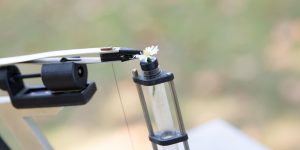
lovesmenot
Sebastian Wolf (DE)
lovesmenot ist Teil einer fortlaufenden Reihe von Automata, die unsere Beziehung zu Maschinen und die Absurdität der Überautomatisierung hinterfragen. In dieser Arbeit zupft eine Maschine nacheinander die Blütenblätter einer Margerite und sucht nach Antworten auf eine Frage, die dem Betrachter niemals offenbart wird.


